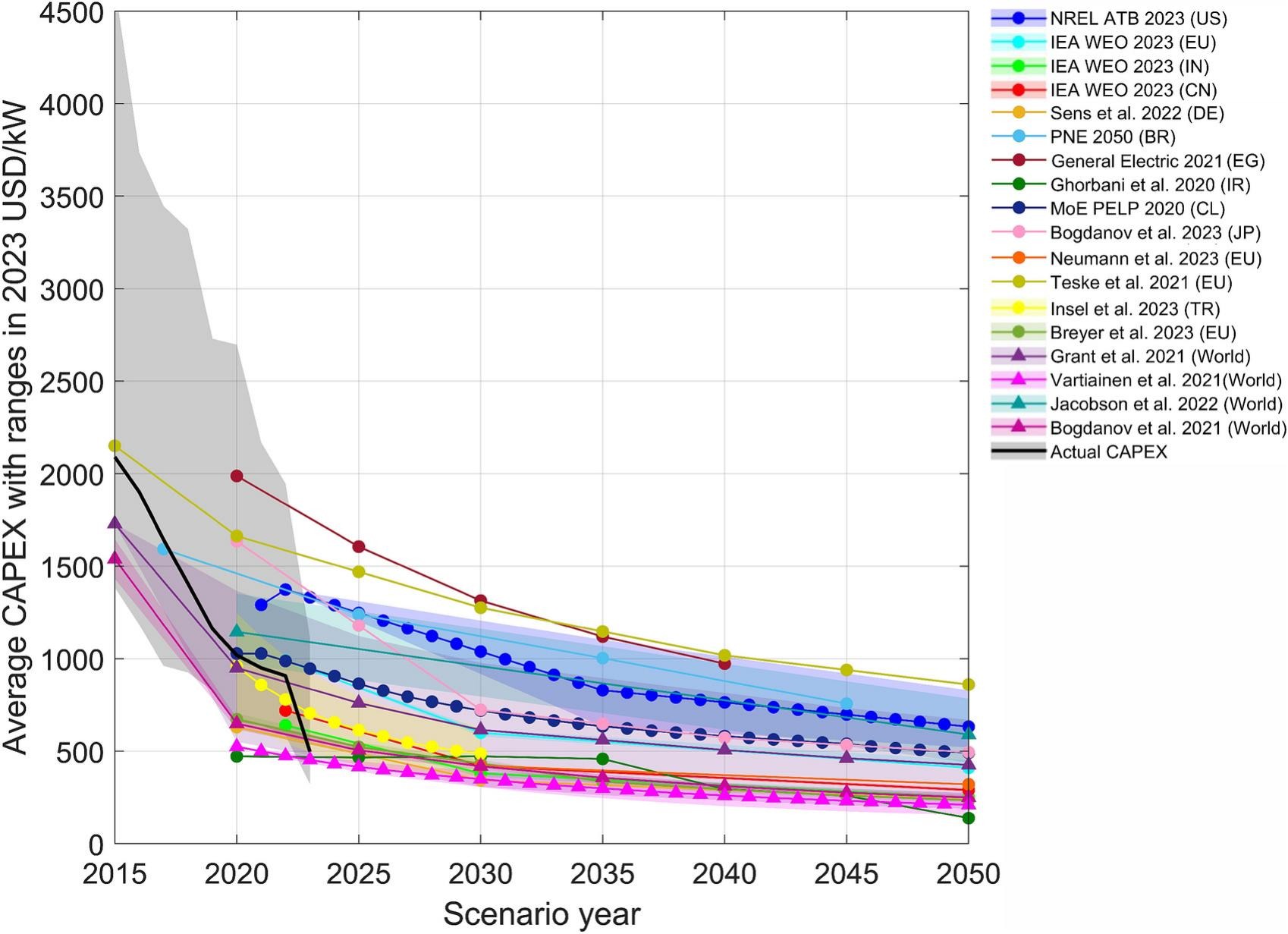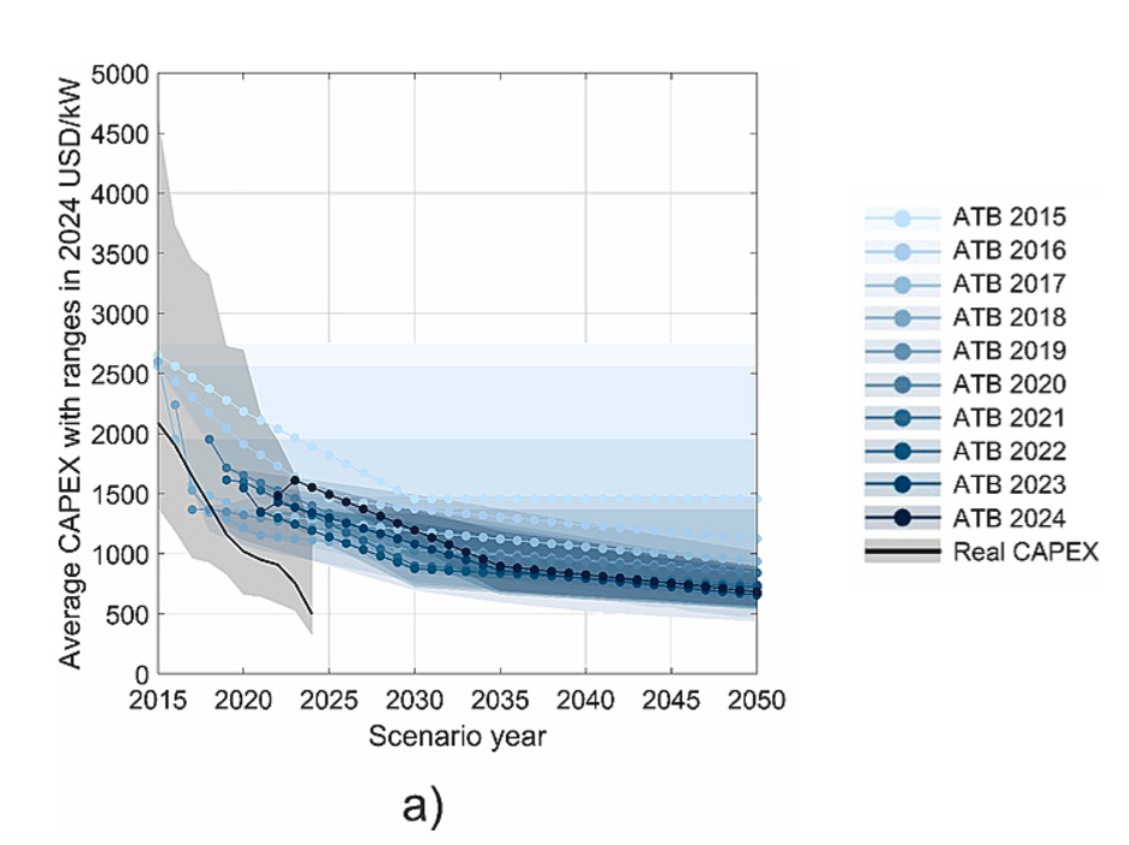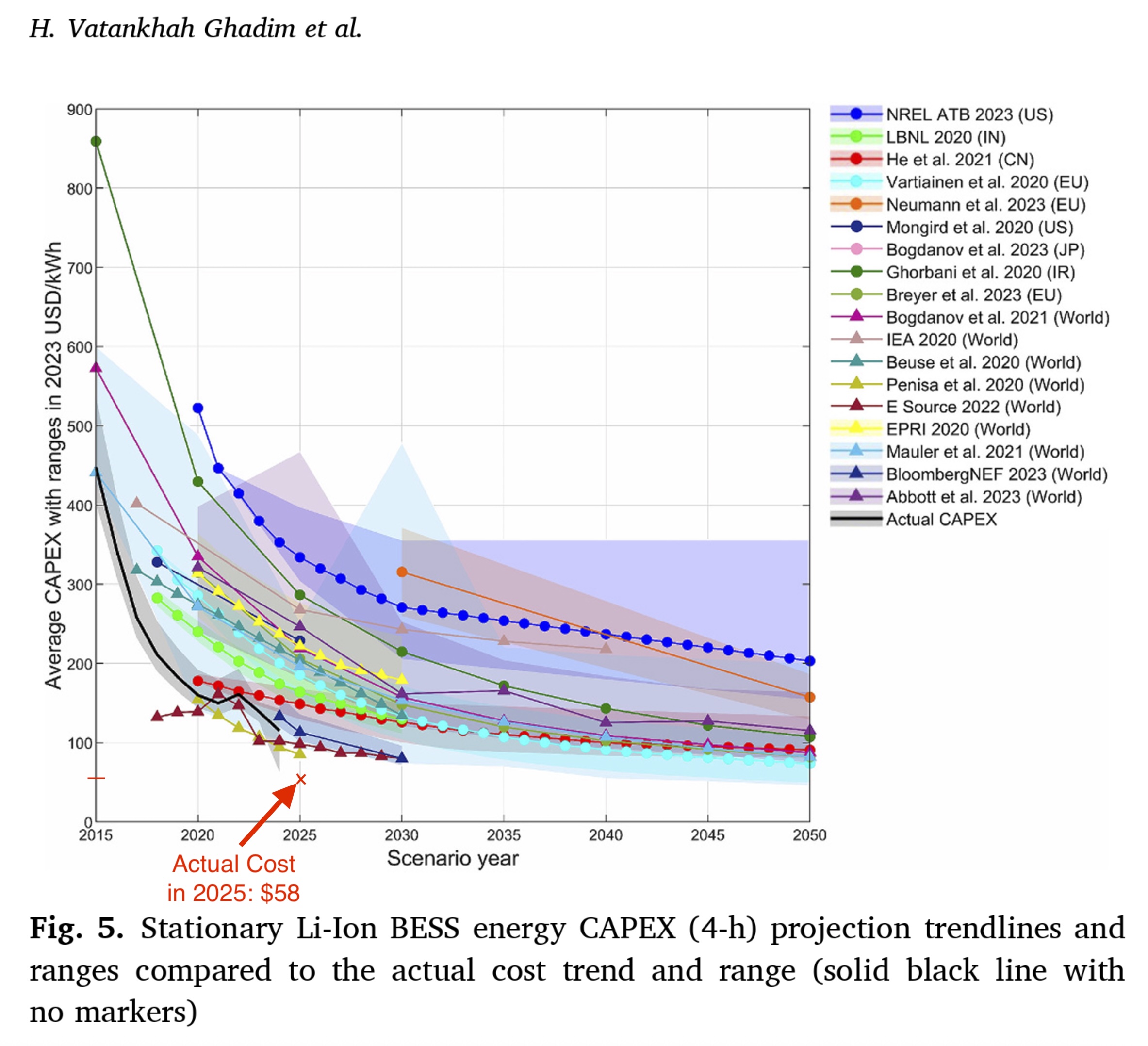Trump’s nuclear ‘renaissance’ rests on risky plan for radioactive waste
The administration goes all-in on recycling spent fuel, despite a history of spectacular mishaps, including an unintentional atom bomb.
Today at 6:00 a.m. EDT
Top: Radiation protection physicist Mark Somerville looks at a spent fuel storage pool in PG&E's Diablo Canyon nuclear power plant in Avila Beach, California.
Left: Dry spent fuel storage at the shuttered San Onofre Nuclear Generating Station.
Right: President Donald Trump signs an executive order on nuclear power in the Oval Office.
((Photos by Paul Chinn/The San Francisco Chronicle/Getty Images, Allen J. Schaben / Los Angeles Times/Getty Images, Demetrius Freeman/The Washington Post))
That effort is already underway, with a company called Oklo announcing this month it will spend $1.7 billion to build an “Advanced Fuel Center” made up of shiny, futuristic buildings on a Tennessee plot where uranium was enriched for the Manhattan Project more than 80 years ago. The first phase of the development, to be completed in the next five to seven years, will use nascent recycling machinery to spin radioactive reactor waste into fresh, usable fuel for plants.
Industry and administration officials also plan to recycle into reactor fuel plutonium retrieved from dismantled nuclear weapons, one of the most dangerous materials on the planet. The projects follow a decades-long pursuit of nuclear energy recycling in the U.S. with a history of spectacular failures, including inadvertently helping a renegade nation build an atomic bomb.
Even as some prominent nuclear scientists warn Oklo and other start-ups are glossing over major shortcomings in their technology, the companies argue the effort is key to securing enough energy to beat China in artificial intelligence innovation.
Oklo presents nuclear recycling as a tidy process: waste gets reformulated into fuel, the nuisance of spent fuel stockpiles goes away, and a small amount of unusable radioactive material is safely buried, perhaps in compact canisters tubed thousands of feet into the Earth’s crust.
A rendering of Oklo’s fuel recycling facility. (Oklo)
Military police at Elza Gate in 1945 at the Oak Ridge site of the Manhattan Project. (Prisma Bildagentur/Universal Images Group/Getty Images)
“We’re moving forward to actually bring this to scale and realizing the benefits of it,” said Oklo CEO Jacob DeWitte.
Nonproliferation groups and prominent nuclear scholars oppose those plans. They say neither the companies nor the administration has shared the science backing the claim that recycling nuclear fuel at commercial scale using current industry techniques is safe or practical.
The Nuclear Regulatory Commission has redacted Oklo’s entire project plan at the company’s request. The findings from testing at federal government labs by Oklo’s main rival, a firm called Curio, is kept confidential, citing security concerns.
But the details that are public so far, experts say, don’t seem to break new ground.
“These are the same technologies that were developed and rejected decades ago,” said Ross Matzkin-Bridger, a senior adviser at the Energy Department during the Biden administration who now heads the Nuclear Materials Security Program at the nonprofit Nuclear Threat Initiative. “They have been rebranded with new names and slight tweaks, but they still have the same problems. The only thing new is misleading narratives that they have solved the safety, security and waste management issues that make these technologies unworkable.”
If recycling spent fuel is possible, it would solve a real problem. Some 90,000 metric tons of radioactive spent fuel sits mostly in casks outside operating and retired plants. Were it all in one place, storing it could require a facility sprawling dozens of acres.
“All of that spent uranium fuel from our reactors today is just a growing liability for our country,” Energy Secretary Chris Wright said at a congressional hearing in May. “We have a growing hole, a growing burden overhang on us from this waste,” he said, “A lot of this waste and burden could actually be fuel and be of value to next-generation reactors.”
Days later, President Donald Trump signed an executive order calling for the quadrupling of nuclear power in the U.S. and directing his Cabinet to “utilize all available legal authorities” to enable large-scale recycling of nuclear waste. Meeting that goal requires deployment of hundreds of new reactors in communities across the country.
DeWitte, Oklo’s CEO, was in the Oval Office for the signing. Before becoming energy secretary, Wright sat on Oklo’s board. He resigned in February and forfeited his unvested shares in the firm. He pledged in his government ethics disclosures to “not participate personally and substantially” in any government matters involving Oklo.
Trump, Interior Secretary Doug Burgum, Defense Secretary Pete Hegseth and Scott Nolan, CEO of General Matter, right, listen as Jacob DeWitte, CEO of Oklo Inc., speaks before Trump signed executive orders regarding nuclear energy, May 23. (Evan Vucci/AP)
Both Oklo and Curio’s methods involve putting spent fuel rods into molten salt and using an electric current to separate out usable fuel. The technique, called “pyroprocessing,” was first developed in the Argonne National Laboratory in the 1960s, but worries about the immense cost and risks the process would create weapons-grade materials kept it from being deployed commercially.
DeWitte argues it can now be completed more safely and affordably, in part because it could be used in a new generation of nuclear reactors that would not require as high a level of fuel purity as the existing fleet. Oklo and Curio also say new safeguards make the technology impractical for weapons production, a central claim critics say is not backed by the research they’ve seen.
“We didn’t try to go about doing this the way that others have looked at this and which hasn’t really worked out well in the past,” said DeWitte. Earlier commercial efforts separated out usable fuel from spent rods using acid instead of molten salt, a process the start-ups say is more costly and environmentally harmful.
The advanced reactors Oklo hopes to fuel don’t yet exist in the United States. Only Russia and China have such commercial “Generation IV” reactors, at deeply subsidized demonstration plants. Test reactors have been built in the U.S. and United Kingdom, but cost overruns and engineering setbacks have long scuttled plans to bring them to market and forced developers to push back target dates for their projects. Oklo is now attempting to build the first such commercially viable reactor at the Idaho National Laboratory by late 2027.
Panes of glass secure the fuel conditioning facility at the Idaho National Laboratory in Scoville, Idaho, Nov. 14, 2023. (Natalie Behring/Bloomberg/Getty Images)
More than 90 percent of the energy in nuclear fuel rods currently goes to waste because conventional reactors cannot extract it before it becomes mechanically useless, according to the Energy Department. Promoters of recycling argue that is like building a Porsche and junking it after one lap around the track. Skeptics have their own car metaphor: They argue the latest iteration of the technology is just a new paint job on the same old, un-roadworthy jalopy.
Former Energy Secretary Ernest Moniz, an MIT physicist, warns that the administration’s push to recycle plutonium from dismantled warheads is particularly worrisome, threatening to create material that can be used in weapons in the U.S. and abroad, drive up the cost of nuclear power and raise the risk of a dangerous radioactive incident. “None of these concerns have been addressed convincingly by new technology, and reviving ideas that have not worked in the past is particularly ill-timed now,” he said in a statement.
Those concerns are echoed in a letter that 17 prominent nuclear scholars, NGO leaders and former nuclear regulators sent to congressional committee chairs in July, warning the U.S. could “unintentionally foster the spread of sensitive nuclear weapons-related technology.”
The United States largely abandoned efforts to recycle waste for civilian reactors during the Carter administration, after technology shared with India was used by that country to create its first nuclear weapon, according to Frank von Hippel, co-founder of the Program on Science and Global Security at Princeton University. The recycling machinery the U.S. helped India build through the “Atoms for Peace” program enabled it to separate plutonium from spent reactor fuel, he said, a key step to making a bomb.
The companies promoting recycling have launched a public relations blitz to persuade lawmakers and the public that those risks are obsolete, despite experts like von Hippel arguing otherwise.
At Curio’s headquarters in Washington, D.C., an office decorated with mid-century nuclear posters and other artifacts from the atomic era’s heyday, CEO Edward McGinnis explained their solution.
“We want to make sure that we have a security barrier,” McGinnis, who was a top nuclear and nonproliferation adviser in previous administrations, said as he walked a reporter through a model of the technology. “It is self protecting. If you attempted to get to that plutonium to use it for bad purposes, you’d probably die trying.”
A rendering of Curio’s NyCycle Plant. (Curio)
The industry has won over the Trump administration.
“A couple years ago, we would have never thought about using plutonium in reactors,” Bradley Williams, the lead for energy policy at Idaho National Laboratory, where the administration is pursuing recycling research in partnership with companies, said at a recent industry event promoting recycling. “Now it might be a necessity.”
He said the challenge of producing enough fuel to power all the new reactors needed to meet America’s surging demand for energy may require it, as the nation seeks to win a global race to develop artificial intelligence and revive its manufacturing sector. “If the U.S. is going to quadruple nuclear production by 2050, fuel availability is quickly becoming the key issue,” Williams said.
“Fuel availability and energy security are the new national security interest, and our focus in light of [competition with] Russia and China,” he said. “Nonproliferation is something we continue to worry about. But I’d argue that most of the world is more worried about keeping the lights on right now, and they’ll use whatever fuel they can get, and we might need to use every fuel we can get.”
That enthusiasm has spread to the states. Curio, which is also prospecting for a site to build a football field-sized spent fuel recycling plant where nuclear waste would be shipped from around the nation, says officials in several states are courting the firm.
The enthusiasm is a marked turnabout from the first Trump administration, which pulled the plug in 2018 on a planned plutonium recycling facility in South Carolina, after nearly $6 billion of tax dollars was spent on building it. The project’s cost had more than tripled by then, and its estimated completion date, according to the Government Accountability Office, had been extended to as late as 2048 — “a potential delay of 32 years.”
The United Kingdom invested decades in a project planned to recycle uranium and plutonium for the type of next-generation nuclear reactors Curio and Oklo are now targeting.
But the new reactors did not work out as planned, beset by engineering challenges and cost overruns. And the recycling systems were constantly breaking down. By the early 2000s, it was significantly more expensive to try to recycle spent fuel in the U.K. than to dispose of it at storage facilities. As a result of the failed recycling efforts, the nation was left with one of the world’s largest stockpiles of plutonium, and no place to put it.
Japan has had similar problems. A facility it planned to open in the 1990s is still not producing fuel, after its cost exploded to $27 billion. France, which uses an acid process to recycle spent fuel on a large scale, has had more success. But, according to nuclear energy economists, it requires billions of dollars of subsidies and highly secure facilities to keep plutonium from getting into the wrong hands.
High-level radioactive waste from nuclear power plants is stored and monitored at a facility in Japan's first spent nuclear fuel reprocessing plant under construction by Japan Nuclear Fuel Ltd. in Rokkasho, Aomori prefecture, Japan, April 16, 2014. (Kyodo News Stills/Getty Images)
The National Agency for Radioactive Waste Management's logo on a nuclear waste storage canister at the Cigeo project, a nuclear laboratory and underground storage facility site operated by Andra in Bure, France, March 25, 2019. (Alex Kraus/Bloomberg/Getty Images)
The administration projects confidence those issues are being solved, arguing perfecting the technology is a national imperative at a time when the U.S. is growing ever more desperate for a solution to its power crunch and its nuclear waste problem.
Recycling can’t turn all of the waste into fuel. The small amount left at the end of the process is highly radioactive and challenging to dispose of. That has companies exploring technologies to put such waste in canisters that can be sent into boreholes drilled as deep as 15,000 feet underground — a solution on paper, but one that may be no more appealing to the public than foregoing recycling altogether and building a national repository for all of its nuclear plant waste.
“The idea that it will be more politically acceptable to build reprocessing plants that are handling intensively radioactive materials, and that also require their own waste repository, doesn’t make any sense to me,” said Matthew Bunn, a nuclear and energy policy scholar at Harvard.
States courting the projects are largely ignoring such warnings. Rep. Chuck Fleischmann, a Republican from Tennessee who co-chairs the House Nuclear Cleanup Caucus, said Oklo is just one of several recycling outfits looking to locate in his district, and he welcomes the interest. He’s persuaded the technology is no longer risky.
Utah is also positioning to go all-in, after the state’s Office of Energy Development declared in a report that “the risks of recycling are primarily political in nature, all technical risks can and already are being navigated safely around the world.”
Curio’s McGinnis got little pushback from lawmakers there when he made his pitch at a legislative hearing last fall. Following his presentation, Utah state Sen. David P. Hinkins, a Republican from Orangeville, pronounced: “You’re welcome here.”
























 + Microgrids are the way.
+ Microgrids are the way. 




